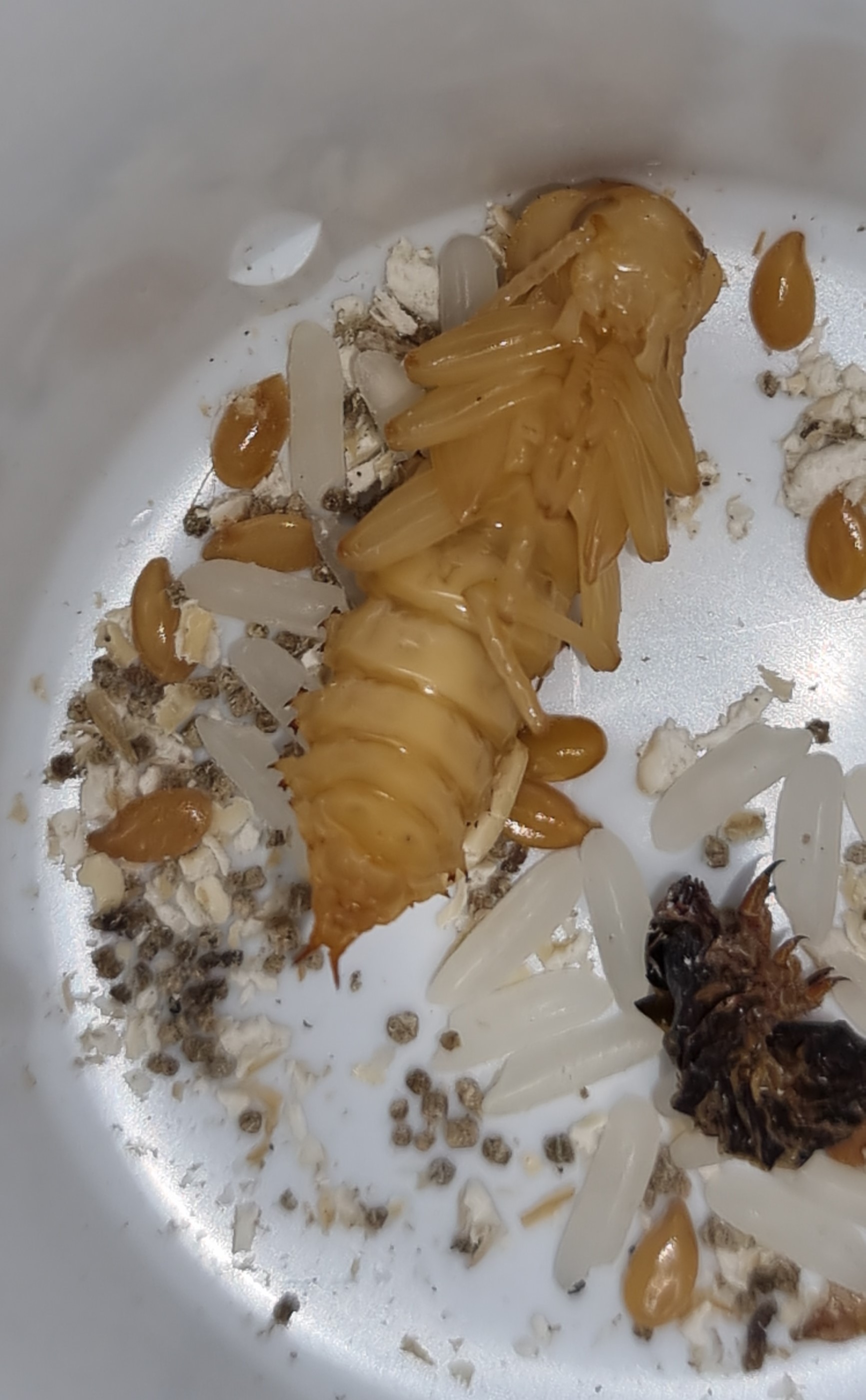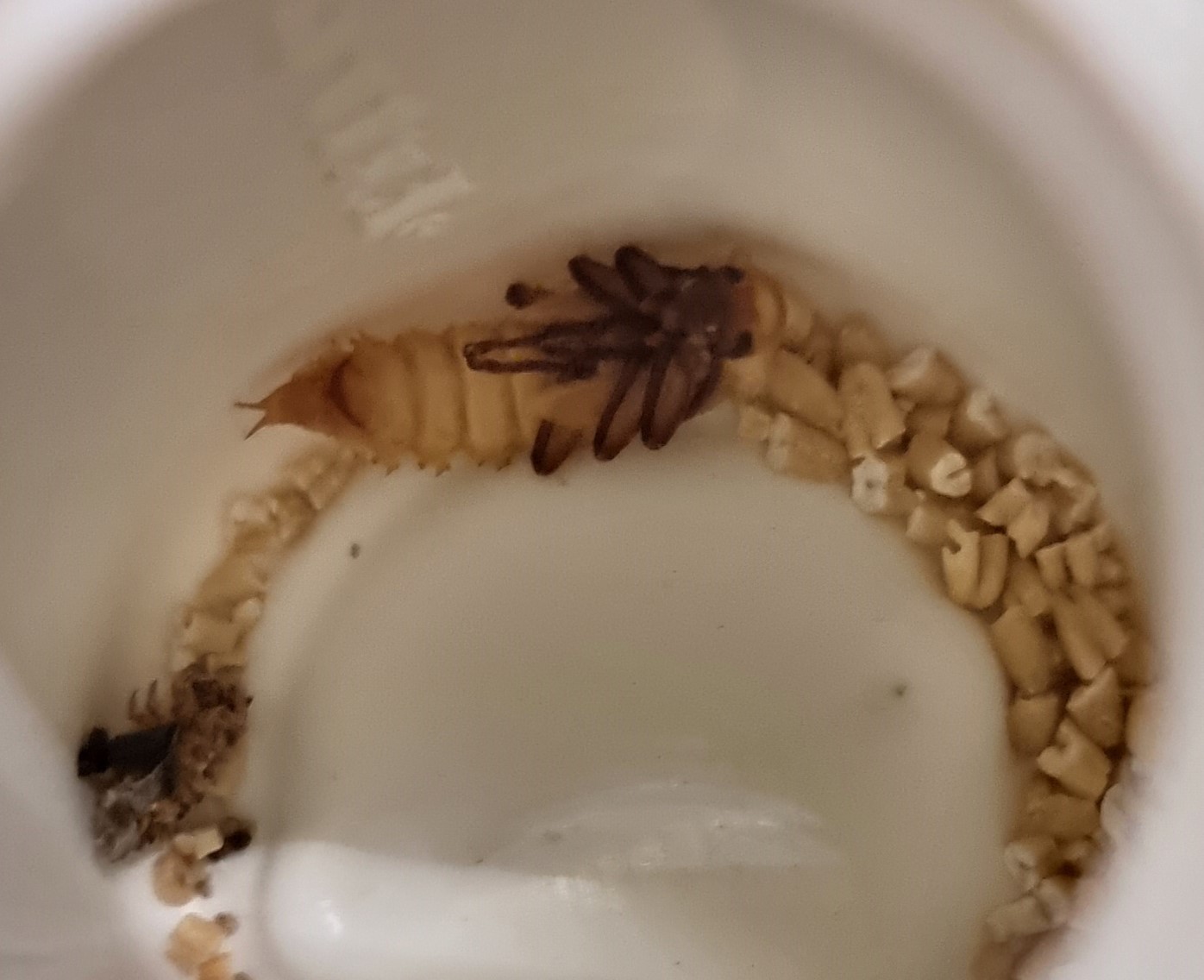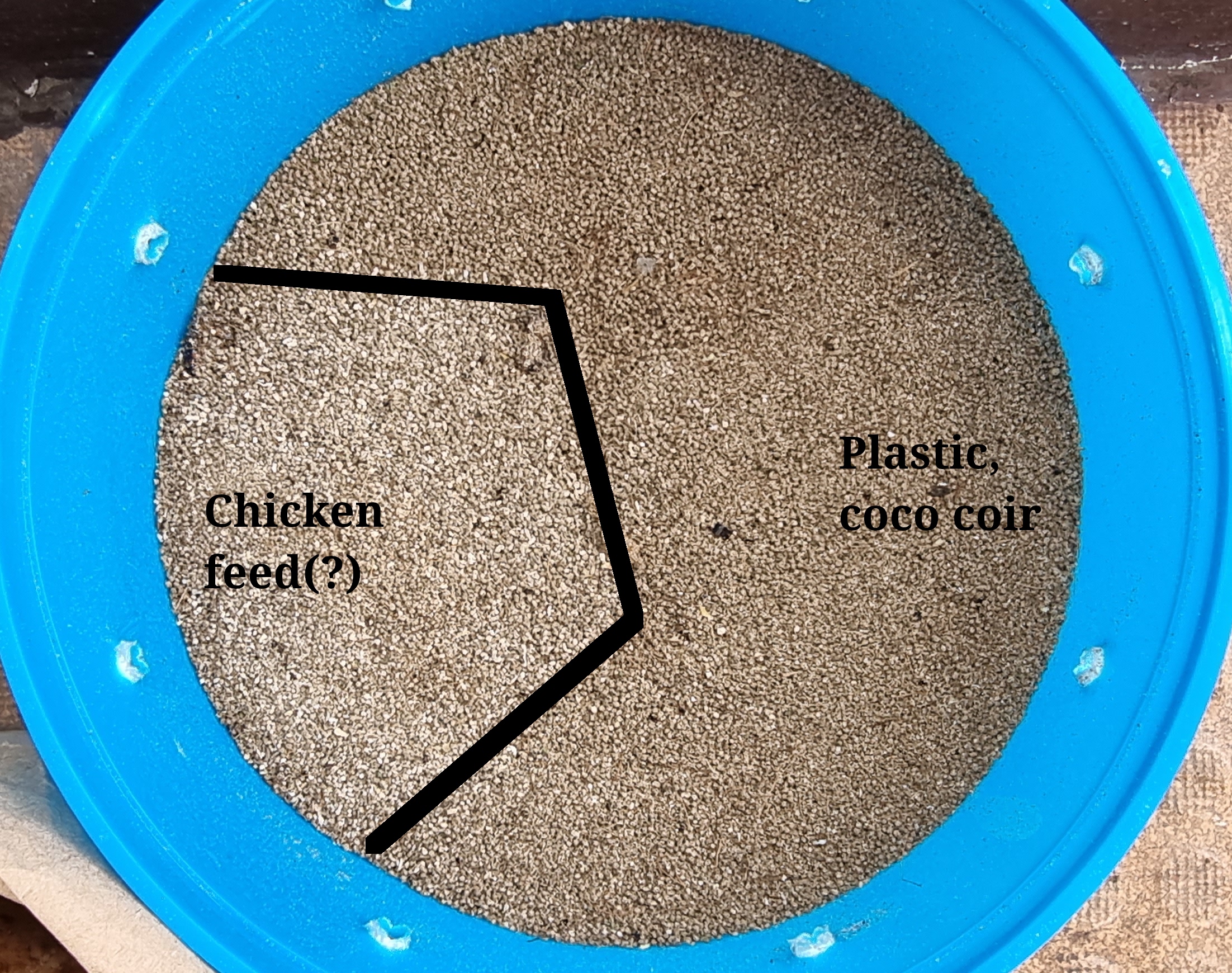Zophobas morio
I’m raising superworms now.
Why?
- I heard they can eat styrofoam. And we do have some styrofoam around.
- There are some birds on the lot adjacent to our house. I’m planning to set up a bird table/feeder of sorts, filming birds as they eat their fill. Superworms might be a worthy offering to the feathery gods.
- This channel looks great. I kinda want herps now.
- I’m planning to have chickens sometime this year. I hope I can feed these to them to cut down on feed costs and improve egg quality.
- Maggot farming sounds interesting.
But what are superworms? According to Wikipedia:
Zophobas morio is a species of darkling beetle, whose larvae are known by the common name superworm, kingworm, morio worm or simply Zophobas. Superworms are common in the reptile pet industry as food, along with giant mealworms, which are Tenebrio molitor larvae sprayed with juvenile hormone.
The original plan was to actually get mealworms. However, I realised that I ordered superworms instead after paying for everything (1000 pieces “large” for ₱569 from a local seller), plus it arrived on the same day. So it’s kind of an impulse buy.
But I am loving taking care of these critters. I love how the larvae’s tiny mandibles chomp down when they eat.
Unlike mealworms, superworms must be separated in order to pupate. The pupa does look like an alien. Or a Kakuna.
The pupa initially looks creamy white, as below. The black spiderlike thing on the lower right is its larval skin.

The pupa takes about two weeks to mature (i.e., turn into a beetle). When they look like this, it will only take a day or two for them to emerge as adults.

Initially, the adults look white with a red patch on the head, turning orange, red, then black in the following days. Below’s a video of one walking around.
As beetles, they prefer dark places. It is said that they emit a pungent smell when disturbed. Their bin does smell like fermented fruit or old grain, which I find quite nice. It’s not very strong, quite like the aftertaste of fruity coffee. Or maybe I haven’t disturbed them that much yet (I don’t plan to).
Regarding styrofoam, I experimented having that as their bedding together with coco coir. They do eat the styrofoam (you can see and hear them munching and tunneling through it), eventually turning it to frass. Below compares the frass produced by the original bedding (the one that came with the worms) versus the one produced by the styrofoam + coco coir; the former is a bit lighter than the latter. I believe the worms were originally fed either chicken feed or hog mass, as the substrate smelled like that on delivery.

It might be best to treat styrofoam as their junk food. Come to think of it: if you want to feed these to your pets or wildlife, you would want them to be nutritious, healthy, and devoid of microplastics as much as possible. A superworm might be able to digest styrofoam bits, but it might have not digested them yet if you immediately give them to your pets or wildlife. Also, gut loading is a thing.
Aside from being animal feed, it can also be eaten by humans. If this video is to be believed, it is becoming popular in Bohol as chichaworm.
Whether as pet, bird, herp, or human feed, or themselves being pets, taking care of these worms has been very entertaining and quite fulfilling, especially after successful pupation. Next for me is raising a second generation, which haven’t happened yet as of writing. I’m looking forward raising multiple generations. I might sell them eventually; if Pinoy YouTubers are to be believed, I could make thousands in encome.
Good references:
- Wikipedia
- YouTube:
- The Spruce Pets, not only for superworms but pets in general.
- Insectville: Raising Superworms: Life Cycle and Requirements
My YouTube superworms playlist
UPDATES:
- 08 Aug 2022: Added link to my YouTube superworm playlist.
- 22 Dec 2022:
- Added to the insecting section.
- Changed title to scientific name.
Comments
None.
